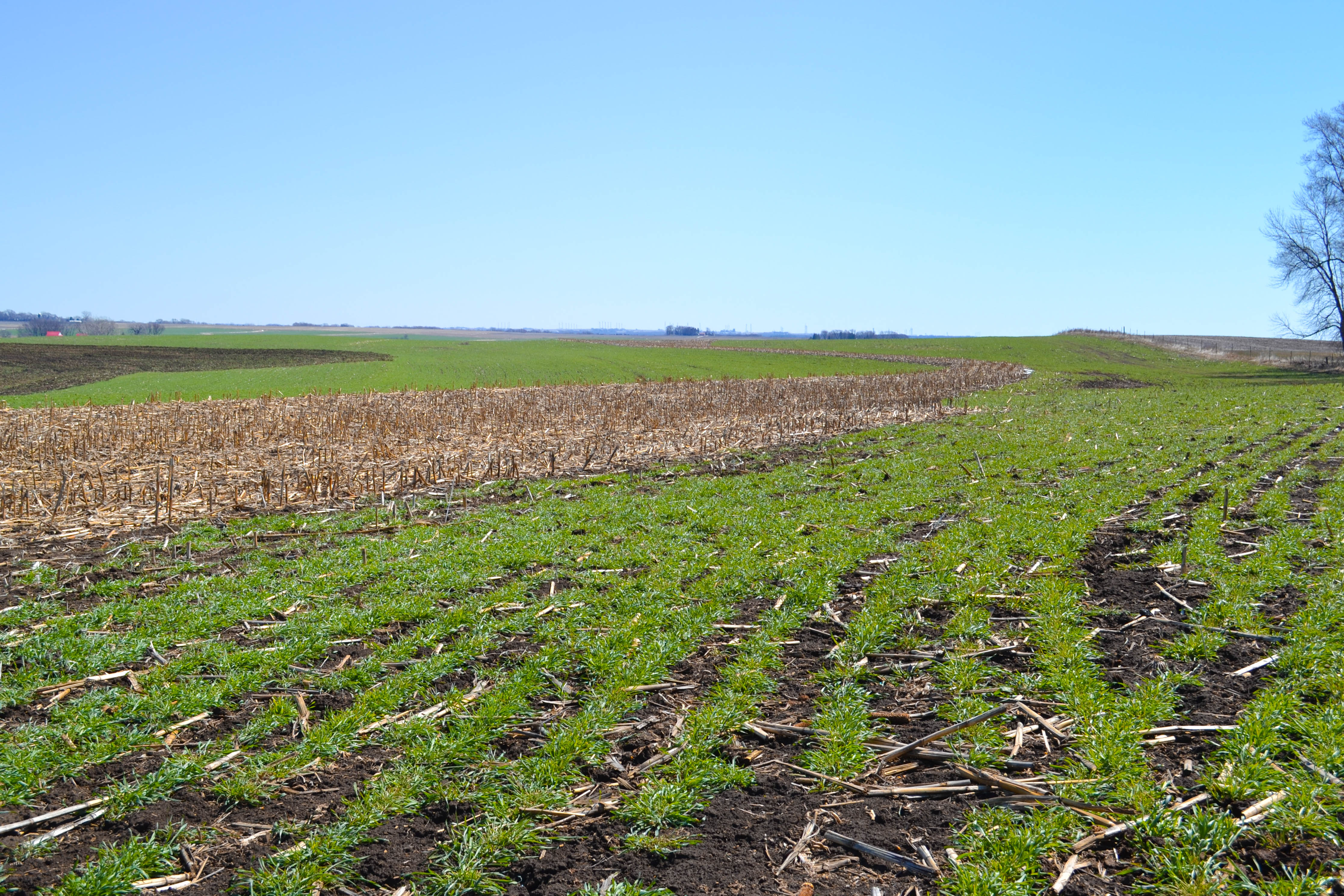
Drilling of cereal rye, wheat or triticale is recommended after harvesting your cash crop this fall. (Photo: Kriss Nelson/Iowa Soybean Association).
Cover crop seeding after harvest
October 6, 2022 | Kriss Nelson
To give your fall-seeded cover crops the best start this fall, Scott Nelson, Iowa Soybean Association’s (ISA) senior field services program manager, says carefully consider how your cover crops, specifically cereal rye, is planted.
“I encourage farmers to drill cereal rye for corn production acres going into soybeans next year,” he says. “Even though it’s dry, they will come up eventually and recapture some leftover nitrogen from the drought-stressed corn.”
Drilling after harvest is one of the best methods to plant cover crop seed to assure good cover crop establishment.
When considering what type of seed to use for cover crops, Nelson says waiting until after harvest does bring some limitations.
“In a normal corn-soybean rotation, if you wait until after harvest to drill, consider cereal rye, wheat or triticale,” he says. “It is too late for oats, clovers, radishes and turnips.”
Nelson says some farmers have had great success drilling a blend of camelina, a winter-hardy brassica with winter-hardy grasses.
“In adding camelina, you can reduce the amount of grass in the blend,” he says.
In an ISA trial for this fall, Nelson says experiments are being conducted with the legume, hairy vetch, drilled with lower rates of cereal rye ahead of corn.
“We have observed drilled vetch to overwinter in Iowa, but we don’t know yet how large we can let the hairy vetch get before terminating,” he says.
For more information on growing cover crops, ISA has made Advancements in Cover Crop Management available for reference.
Cover crop simulator
When it comes to helping make other cover crop management decisions, ISA’s analytics team has an economic tool that can help.
The Cover Crop Economic Simulator can be a starting point for those unfamiliar with cover crop management and a useful platform for long-time cover crop users. The tool helps decide which management strategies will best fit an individual operation.
Based on partial budget economic analyses of cover crops, the interactive simulator shows visual illustrations of estimated outcomes based on market prices. It provides examples of cost offset opportunities and their impact on revenue, creating a sensitivity analysis of net return.
Back